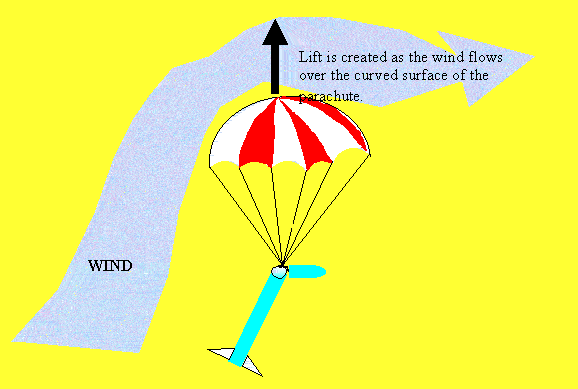Parachute Design.
Often the winds at an altitude of 100m are far stronger than the winds felt by people on the ground. As a consequence the parachute, instead of descending gently to the ground, will lift and float away in the wind. This often happens as the parachute acts as an aerofoil.

Lift is created as the wind flows over the curved surface of the parachute.
As the air speeds over the top of the parachute it causes an area of low pressure to occur (Bernoulli’s Law) above the parachute while an area of high pressure develops below the parachute. This area of high pressure pushes the parachute into the low pressure region and lifts it even higher. This may prove to be a big disadvantage when launching on days with a little wind present.
The army has conducted a great deal of research into parachute design. Paratroopers need to feel safe when parachuting into enemy territory. Follow the worksheet below and conduct some research that will give you information for improving your parachute design.
* Ideas to consider.
· What effect does the length of the shroud lines have on the rate of descent.
· What effect does a hole in the middle of the parachute have on the behaviour of the parachute.